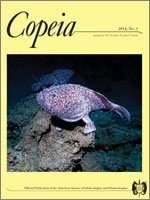Morphological characteristics of fish communities were compared in four rivers with different levels of anthropogenic disturbance: Cipó, Curimataí, Pardo Grande, and Velhas. Discriminant function analysis indicated no morphological differences among the communities, suggesting a general morphological pattern for different river communities, regardless of their disturbance level. However, this pattern was shaped by different taxa in each river. Because of the poorer condition of the Velhas River (substrate type, riparian vegetation, and anthropogenic disturbance), it seems that species morphological range is influencing the common morphological pattern. Even with notable differences in biological condition, the Velhas River still accommodates the same range of morphological types, but not the same species pool found in well-preserved rivers within the basin. For this reason, the maintenance of tributaries, with their particular fish species and different physical habitat characteristics, is essential for the conservation of the ichthyofauna on a basin scale. Moreover, the analysis of morphology and composition together allowed a more critical approach of disturbance effects and suggested that these community aspects respond differently.
How to translate text using browser tools
1 March 2014
Morphological Space Stability in Rivers under Different Disturbance Regimes
Cecília G. Leal,
Nara T. Junqueira,
Carlos Bernardo M. Alves,
Paulo S. Pompeu
ACCESS THE FULL ARTICLE





